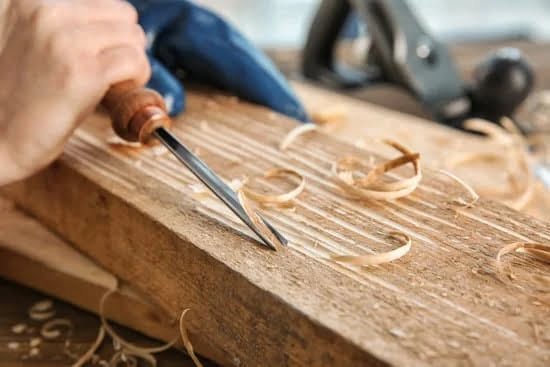Japanese woodworking techniques have gained worldwide recognition for their meticulous craftsmanship, precision, and the seamless way in which each piece seems to effortlessly come together. Rooted in centuries-old tradition, these techniques offer a glimpse into the rich history and cultural significance of Japanese woodworking.
Dating back to ancient times, Japanese woodworking has been passed down through generations, with craftsmen honing their skills and perfecting their craft in pursuit of creating functional and aesthetically pleasing pieces. The philosophy behind Japanese woodworking emphasizes a mindful approach, combining the principles of balance, simplicity, and harmony with nature. This mindset is reflected not only in the final product but also in the entire process of creation.
Central to Japanese woodworking are the essential tools and materials used by craftsmen. These include chisels, planes, saws, and various types of wood sourced from different regions of Japan. The selection of tools and materials is a crucial aspect of the craft as it ensures precision and durability in every joint made.
In this article, we will delve into the world of Japanese woodworking techniques and explore the intricate joinery methods employed by craftsmen that allow them to unite wood without using any glue or nails. We will also discover the meticulous care given to finishing and detailing each piece, further enhancing its beauty. Furthermore, we will explore Shou Sugi Ban – an ancient technique that involves charring wood – as well as how traditional techniques influence modern design.
Whether you are an aspiring woodworker looking to learn new techniques or simply interested in understanding the artistry behind Japanese craftsmanship, this article will provide insights into the world of Japanese woodworking. Additionally, we will provide a step-by-step guide for beginners who wish to try their hand at these techniques at home. Brace yourself for a journey into a traditional craft that has stood the test of time and continues to inspire creativity today.
Understanding the Philosophy behind Japanese Woodworking
Japanese woodworking techniques are not just about creating functional pieces of furniture or structures; they are deeply rooted in philosophy and mindfulness. Understanding the philosophy behind Japanese woodworking allows us to appreciate the craft and approach it with a different mindset.
Harmony with Nature
One of the fundamental principles of Japanese woodworking is harmony with nature. Traditional craftsmen believe that wood is a living material with its own spirit, and they aim to honor and work in accordance with that spirit.
This philosophy manifests in the careful selection of materials, as craftsmen pay attention to the natural characteristics, grain patterns, and unique qualities of each piece of wood used. By working in harmony with nature, Japanese woodworkers create pieces that seamlessly blend into their surroundings.
Minimalism and Simplicity
Another prominent aspect of the philosophy behind Japanese woodworking is minimalism and simplicity. The emphasis is on creating pieces that reflect simplicity in design while emphasizing functionality. Unnecessary embellishments are avoided, allowing the natural beauty of the wood to shine through. The belief is that this simplicity brings a sense of tranquility and calmness to both the creator and the user.
Mindfulness and Mastery
Japanese woodworking also places a strong emphasis on mindfulness and mastery. Craftsmen strive for perfection through continuous practice, paying attention to every detail during each step of the process. This intense focus allows them to achieve exceptional precision in their work. It is believed that by being fully present in each moment while working, craftsmen can cultivate a deep connection with their tools and materials, resulting in pieces that exude beauty and excellence.
Understanding these philosophical concepts behind Japanese woodworking techniques gives us insight into why these methods have endured for centuries. Incorporating mindfulness, harmony with nature, minimalism, simplicity, and mastery into our own approach to woodworking can help us not only create functional pieces but also experience a deeper connection to our craft.
Essential Tools and Materials Used in Japanese Woodworking
Japanese woodworking is renowned for its precision, simplicity, and attention to detail. To achieve such remarkable results, Japanese craftsmen rely on a unique set of tools and materials that have been perfected over centuries. In this section, we will delve into the essential tools and materials used in Japanese woodworking, uncovering the secrets behind their traditional craftsmanship.
Traditional Hand Tools
One of the distinguishing features of Japanese woodworking is the use of hand tools instead of power tools. The emphasis on handcrafted precision allows artisans to have more control and achieve finer details in their work. Some essential hand tools used in Japanese woodworking include:
- Chisels (Nomi): These are the most important tools in a woodworker’s arsenal. Japanese chisels are forged from high-quality steel with a sharp cutting edge. They come in various shapes and sizes for different tasks.
- Hand Saws (Nokogiri): Traditional Japanese saws are pull saws rather than push saws like their Western counterparts. The thin blades have teeth on one side only, resulting in cleaner cuts.
- Planes (Kanna): Japanese planes are used to smooth and shape the wood surface. They consist of a wooden body with a replaceable iron blade that can be adjusted to achieve different thicknesses.
- Marking Tools: Japanese woodworkers use specialized marking tools like sashigane (square), sumitsubo (ink line marker), and kigoroshi (knife) to mark precise measurements on the wood.
Traditional Joinery Techniques
Another characteristic of Japanese woodworking is its intricate joinery techniques, which allow craftsmen to create beautiful and durable furniture without relying on nails or glue. Some commonly used joinery techniques include:
- Mortise and Tenon Joints: This technique involves cutting a mortise hole in one piece of wood and fitting a tenon from another piece into it, creating a strong connection.
- Dovetail Joints: Dovetails are interlocking joints used in woodworking to connect two pieces of wood at right angles. They provide strength and resistance against pulling forces.
- Kumiko Joints: Kumiko is a traditional lattice-like pattern found in many Japanese wooden screens and doors. It is created by fitting together small, interlocking pieces of wood without the use of any adhesive.
Materials
Japanese woodworking typically utilizes local and sustainable materials that have been carefully selected for their natural beauty and durability. Commonly used woods include hinoki (Japanese cypress), kiri (paulownia), keyaki (zelkova), and sugi (cedar). These woods are prized for their excellent stability, lightweight nature, and resistance to decay.
In addition to wood, other materials such as urushi (natural lacquer) are frequently employed in Japanese woodworking. Urushi not only enhances the aesthetics of the piece but also provides protection against moisture and wear.
Understanding the essential tools and materials used in Japanese woodworking offers valuable insights into the craftsmanship behind this ancient artform. By embracing traditional techniques, woodworkers can create exquisite pieces that stand the test of time while embodying the essence of Japanese design philosophy.
Traditional Joinery Techniques
In the world of Japanese woodworking, traditional joinery techniques hold a special place. These techniques allow craftsmen to connect and secure pieces of wood without the use of any glue or nails, resulting in furniture and structures that are not only beautiful but also durable and long-lasting. This unique method of joinery highlights the skill, precision, and ingenuity that Japanese woodworkers possess.
One of the most well-known traditional joinery techniques in Japanese woodworking is called “Kumiko”. Kumiko is a method of creating intricate wooden lattice work by carefully fitting together small individual pieces. The craftsmanship involved in creating these interlocking joints is truly remarkable, with each piece cut and shaped with great precision to ensure a tight fit. The end result is a visually stunning lattice pattern that adds both strength and beauty to the piece.
Another popular joinery technique in Japanese woodworking is the “Mortise and Tenon” joint, known as “hozo-tsugi” in Japanese. This technique involves inserting one end of a piece of wood (the tenon) into a hole or slot (the mortise) of another piece to create a strong connection.
The accuracy required for this technique is impressive, as even the slightest misalignment can compromise the joint’s strength. The beauty of this method lies in its simplicity – no additional fasteners are needed for a solid bond.
Lastly, there is the “Dovetail” joint, known as “zairai-tegagi” in Japan. This joinery technique involves cutting wedge-shaped projections on one piece of wood that fit into corresponding slots on another piece to create an incredibly strong bond. The precise craftsmanship required for this joint reflects the meticulous attention to detail that characterizes Japanese woodworking overall.
By using these traditional joinery techniques, Japanese woodworkers are able to create furniture and structures that showcase both functionality and beauty. These methods not only rely on precise measurements and superior craftsmanship, but they also utilize the natural properties of wood to ensure structural stability over time. Whether it’s a delicate lattice pattern or a strong joint that can withstand the test of time, Japanese joinery techniques continue to impress and inspire craftsmen around the world.
– Kumiko:
- Intricate wooden lattice work.
- Precision cutting for a tight fit.
- Strength and beauty combined.
– Mortise and Tenon:
- Strong connection without additional fasteners.
- Precise accuracy required.
- Simplicity at its best.
– Dovetail:
- Wedge-shaped projections create a strong bond.
- Meticulous attention to detail.
- Combining functionality and beauty.
The Beauty of Japanese Woodworking
Japanese woodworking is not only about creating functional and sturdy pieces, but it also places a great emphasis on the beauty of the finished product. In this section, we will delve into the meticulous care given to finishing and detailing in Japanese woodworking.
One key aspect of Japanese woodworking that sets it apart is the attention to detail in every step of the process. From selecting the right wood to intricate joinery techniques, each element is carefully considered to ensure that the final piece not only serves its purpose but also showcases exquisite craftsmanship.
In Japanese woodworking, finishing techniques are employed to enhance the natural beauty of the wood while offering protection against moisture and wear. The most commonly used finishes include natural oils, lacquer, or wax. These finishes penetrate into the wood fibers, highlighting its grain, texture, and color variations. Additionally, they create a smooth surface that feels pleasant to touch.
Detailing is another aspect where Japanese woodworking truly shines. Intricate carvings, inlays, and decorative elements are often added to enhance the overall aesthetic appeal of the piece. This attention to detail can be observed in traditional furniture like tansu chests or shoji screens – where precision-cut wooden frames hold delicate paper panels – as well as in small decorative items like boxes or trays.
To achieve such meticulous detailing, Japanese woodworkers utilize a range of specialized hand tools such as chisels with different blade shapes and widths for carving or cutting fine lines. They also employ saws with extremely fine teeth known as “dozuki” saws for precise joinery work. These tools require skill and patience as they are used with controlled movements to create intricate patterns that add depth and character to the finished piece.
Japanese woodworking’s dedication to finishing and detailing demonstrates a deep respect for both material and craftsmanship. By paying meticulous attention to these aspects throughout their work process, Japanese woodworkers elevate ordinary pieces into extraordinary works of art that showcase both beauty and functionality.
- Highlighting Natural Beauty: Japanese woodworking finishes like natural oils, lacquer, or wax are used to bring out the wood’s grain, texture, and color variations.
- Precise Detailing: Specialized hand tools such as chisels with different blade shapes and widths and fine-toothed saws are utilized to create intricate carvings and decorative elements.
- Aesthetic Enhancement: The attention to detail in finishing and detailing elevates Japanese woodworking pieces into extraordinary works of art that are both beautiful and functional.
Exploring Shou Sugi Ban
Shou Sugi Ban is a unique and distinct technique in Japanese woodworking that involves charring wood to create a beautiful and durable finish. This ancient method not only adds aesthetic value to the wood but also enhances its resistance to fire, pests, and weathering. In this section, we will explore the process of Shou Sugi Ban and its significance in Japanese woodworking.
The term “Shou Sugi Ban” translates to “burned cedar board,” which reflects the traditional practice of using Japanese cedar as the primary wood for this technique. The process begins by carefully charring the surface of the wood using open flames, such as a torch or gas burner. This controlled charring creates a layer of carbon on the surface, giving it a distinct black color.
The charred wood is then brushed with a stiff bristle brush to remove any loose soot or ash. This reveals the natural grain pattern of the wood, creating a striking contrast between the dark charred surface and the lighter inner layers. Finally, the charred wood is treated with natural oils like tung oil or linseed oil to enhance its durability and texture.
Shou Sugi Ban not only adds an appealing visual element to woodworking projects but also provides functional benefits. The charring process significantly increases the wood’s resistance to fire by creating a non-combustible layer on its surface. Additionally, this technique makes the wood more resistant to pests like termites and rot-causing fungi, ensuring longevity for outdoor applications.
Japanese Woodworking in Modern Design
Japanese woodworking techniques have a rich historical and cultural significance, and their influence can be seen in modern design and contemporary furniture. These traditional techniques, rooted in mindfulness and attention to detail, continue to inspire and shape the work of modern craftsmen around the world.
One way in which traditional Japanese woodworking techniques have influenced contemporary furniture design is through the emphasis on natural materials. In contrast to mass-produced furniture made from synthetic materials, Japanese craftsmanship often highlights the inherent beauty of wood. The use of solid wood with its unique grain patterns and textures has become a hallmark of modern furniture inspired by Japanese woodworking.
Another aspect that reflects the influence of traditional Japanese woodworking techniques is the focus on joinery. Instead of relying solely on screws or nails for structural support, traditional Japanese carpentry utilizes time-tested methods such as mortise and tenon joints or dovetail joints. These techniques not only provide superior durability but also add an aesthetic appeal to the finished piece. This emphasis on joinery can be seen in contemporary furniture designs that feature exposed joints or intricate interlocking mechanisms.
Furthermore, Japanese aesthetics play a significant role in shaping modern furniture design influenced by traditional woodworking practices. The concept of wabi-sabi, which celebrates imperfections and embraces simplicity and nature, has permeated contemporary design influenced by Japanese craftsmanship. Minimalist lines, clean shapes, and an appreciation for natural materials are characteristic features found in modern furniture that pays homage to the principles ingrained in traditional Japanese woodworking.
| Traditional Technique Influenced | Contemporary Furniture Example |
|---|---|
| Mortise and Tenon Joints | A dining table with exposed joinery that showcases the craftsmanship and adds visual interest. |
| Shou Sugi Ban | A charred wood accent wall in a modern living room for a striking and unique focal point. |
| Hand Planing | A wooden coffee table with hand-planed surfaces that highlight the natural beauty of the wood grain. |
The seamless integration of traditional Japanese woodworking techniques into modern furniture design not only reflects a dedication to craftsmanship but also encapsulates the timeless beauty and cultural heritage associated with these practices. It is through this combination of contemporary aesthetics and traditional craftsmanship that Japanese woodworking has made an indelible impact on the world of furniture design.
Step-by-Step Guide to Trying Japanese Woodworking Techniques at Home
Japanese woodworking techniques offer a unique and fulfilling journey into the world of craftsmanship. If you’ve been inspired by the beauty and philosophy behind this ancient art, it’s time to embark on your own beginner’s journey into Japanese woodworking. This step-by-step guide will help you get started, providing valuable insights and tips for exploring this fascinating craft in the comfort of your own home.
- Study and Research: Before diving into Japanese woodworking, take the time to educate yourself about its history, principles, and techniques. Read books, browse online resources, watch tutorials, and learn from experienced woodworkers. Building a solid foundation of knowledge will help you develop a deeper understanding and appreciation for this craft.
- Gather Essential Tools: Japanese woodworking relies on a distinct set of tools that differ from those used in Western woodworking traditions. Obtain the necessary tools such as chisels, planes, saws, marking knives, and sharpening stones. Invest in high-quality tools that will last long and enhance your woodworking experience.
- Start with Simple Projects: As a beginner, it is important to start with simple projects that allow you to practice basic techniques and gain confidence before moving onto more complex ones. Begin with small items like wooden spoons or coasters that require simple joinery techniques like mortise-and-tenon or dovetail joints.
- Learn Joinery Techniques: Traditional joinery is at the heart of Japanese woodworking. Spend time mastering these joining methods without relying on glue or nails. Practice techniques such as mitered dovetail joints, half-lap joints, or kumiko lattice work to create strong connections between wooden components.
- Embrace Minimalism and Aesthetics: One key aspect of Japanese woodworking is its focus on simplicity and minimalism in design. Pay attention to proportions, balance, and harmony when creating your pieces. Experiment with different finishes like oil-based varnishes or natural wax to bring out the natural beauty of the wood.
- Develop Patience and Mindfulness: Japanese woodworking is a mindful practice that requires patience, focus, and precision. Embrace the process, take your time, and enjoy each step along the way. Allow your work to become a meditative experience that brings you closer to nature and yourself.
Remember, Japanese woodworking is more than just creating functional pieces; it’s an art form that reflects a deep appreciation for nature, craftsmanship, and aesthetics. By following this step-by-step guide, you can embark on your own beginner’s journey into this world of Japanese craftsmanship and discover the joy of creating something truly meaningful with your hands.
Frequently Asked Questions
What is Japanese woodworking called?
Japanese woodworking, also known as “tategikumi,” is a traditional woodworking style that has been practiced in Japan for centuries. It is characterized by its emphasis on precision, simplicity, and harmony with nature. Japanese woodworking places great importance on the natural beauty and characteristics of wood, and focuses on creating functional yet aesthetically pleasing pieces.
What are the Japanese wood cutting techniques?
Japanese wood cutting techniques are renowned for their precision and efficiency. One such technique is the “kiri-komi” method, which involves making accurate and clean crosscuts using a pull saw.
Another technique is the “sunukezori,” where a convex shape is carved into a piece of wood to improve its strength and stability. Additionally, the “ito-zukuri” technique involves cutting thin wooden strips called “ito” to be used as lattice-like elements in traditional screens or doors.
What are Japanese joinery techniques?
Japanese joinery techniques are admired for their ingenuity, strength, and simplicity. These techniques involve connecting wooden pieces without the use of nails or screws but instead rely on precise cuts and interlocking joints. For example, the “mortise-and-tenon” joint, known as “hozo-sashimono,” is widely used in Japanese joinery.
This joint involves carving out a rectangular hole (mortise) in one piece of wood to fit snugly with a corresponding protrusion (tenon) in another piece of wood. Another common joinery technique is called “miter joint,” where two pieces of wood are cut at an angle to form a seamless corner connection without exposing end grains. These intricate joinery techniques not only provide structural integrity but also add an element of craftsmanship to Japanese woodworking projects.

Hi everyone! I’m a woodworker and blogger, and this is my woodworking blog. In my blog, I share tips and tricks for woodworkers of all skill levels, as well as project ideas that you can try yourself.





